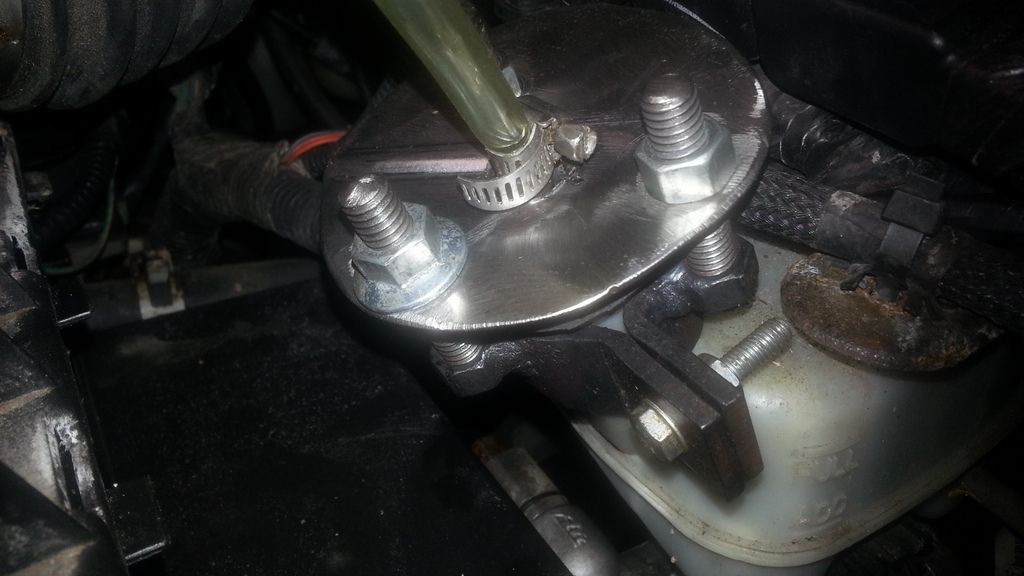I put this together 10 years ago or so but used it today so I thought I would share. There is a commercial version for sale but it wasn't worth it for me. I was sick of using all the cheesy one man bleeding systems that didn't work sold at the auto parts stores. Speed bleeders, vacuum pumps, plastic containers with magnets... all a waste of time money and sanity.
The pressure bleeder works with abs, can allow bleeding of calipers in any order, will bleed calipers that have the bleeder valve upside down and will bleed brake systems with the master cylinder below the calipers and other crazy setups. If you are using expensive brake fluid for your track car you can bleed the very minimum required by the tech.
This is a very simple repurposed of a garden sparyer, a tire pressure gauge, some clear vinyl tube, a flat piece of rubber, a brass barbed fitting (or the tapered cap from some rtv if you are really cheap), a brass "T", hose clamps, some scrap metal/nuts and bolts. I payed under $20 for the stuff I couldn't find for free.
The bug sprayer hand it's plastic wand/hose removed to be replaced with tubing. Tubing is malleable when heated with a small flame and will stretch to fit other similarly sized fittings. I spliced a " T" in the tubing next one end goes to the tire pressure gauge (with one way valve unscrewed and discarded), the other end goes to the master cylinder so make yours long enough. New brake fluid goes in the bug sprayer, make note of where the straw sits in the bottom of the sprayer tank. If you tip the tank and run the fluid to the bottom you might end up sending air up the straw.
Next is the pressure cap, these are also for sale, separately. Mine was harvested from bits of a lawn mover on the curb that I cut up and welded together as shown. (One could use plumbing solder and a propane torch if going cheap. ) the shackles on the sides of the brake fluid resivor just pull down the flat piece of steel and sandwich the rubber gasket to the master cylinder top. The design pictured will work for almost all sizes of filler neck even radiators ( also very handy for finding leaks and bleeding cooling systems at ambient temperature. Just get a new sprayer and tubing to avoid contamination). On the side of the tubing that sits in the brake resivor is the barbed brass fitting ( or tapered rtv cap) this just keeps the tube from getting pulled out and to make a seal.
Hopefully the photos cover what I missed in the description if not just ask.
I pressurize the tank to 10 psi or so then just turn the factory style bleeder screws until the brake fluid changes from yellow to blue and that's it.


 LinkBack URL
LinkBack URL About LinkBacks
About LinkBacks




 Reply With Quote
Reply With Quote





Bookmarks